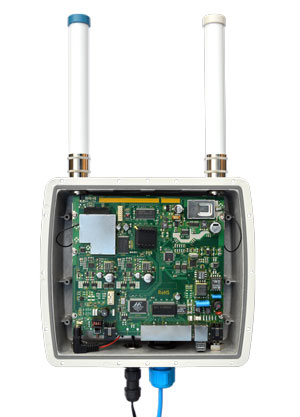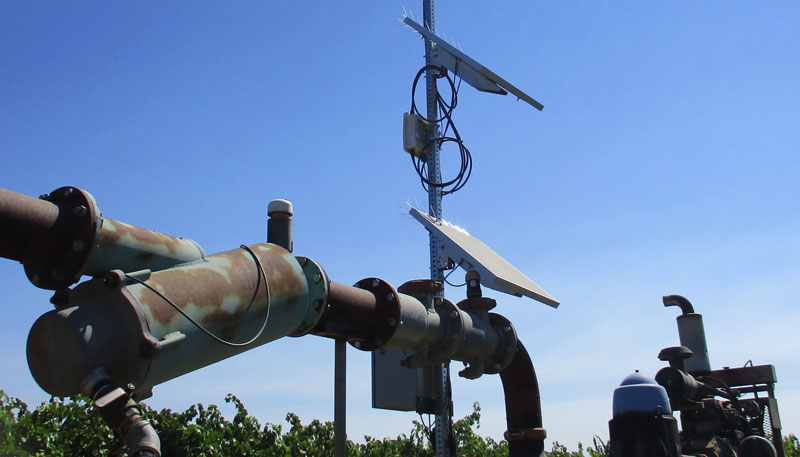The weakest link?
The cost of IoT sensors continues to fall annually allowing more and more organisations in industries that operate across large areas, such as agriculture and utilities, to roll out remote IoT and M2M deployments. To ensure these projects achieve strong ROI, hardware has to tough it out in harsh conditions with minimal maintenance. Andy Bird, Managing Director of GTT Wireless, discusses the requirements for antennas selected for rugged wireless deployments, and how careful consideration of design type, connectors and interoperability will help avoid antennas becoming the weakest link.
Today, we are seeing the boundaries of IoT applications expanding and a rich variety of industrial deployments driving major ROI for organisations. Shell is a prime example. The global oil and gas company has used IoT technology to monitor the condition of remote oilfields across Nigeria, and achieved one million dollars in savings through a reduced requirement for regular physical site inspections.
Now we are looking beyond the Shells of this world and seeing IoT projects that are no longer limited to the largest of businesses. Think of an agricultural firm that has deployed GPS trackers to monitor the location of vehicles and machinery spread across an extensive region. By tapping into real-time positioning data, agricultural managers can monitor driver technique, identify areas for optimising tractor coverage, and ensure vehicles are nearby for scheduled maintenance.
Vulnerable antennas – beware the rising damp!
But with these deployments come regular hardware and geographical challenges, which are often fed back to the GTT Wireless team. For organisations with assets operating across a vast area, constant connectivity and high levels of reliability are vital. Hardware that is proven to resist challenging conditions such as heat, dust and repeated vibration – without sacrificing on performance or functionality – is essential to cut the need for continuous maintenance or replacement.
It is important for organisations to prioritise hardware components and M2M applications that are proven to endure challenging conditions in outdoor environments. Antennas are no exception.
We see a lot of antennas sporting an SMA connector. These may be cheap and readily available, but they are by no means suitable for mission-critical operations – with water representing a major threat. These antennas might deliver suitable connectivity once installed, but incremental stresses such as the slow accumulation of moisture can have a catastrophic effect on housed PCBs.
Prevent threats from all angles
To meet the industry need for rugged IoT-capable antennas, antenna manufacturers have begun to develop extensive, enterprise-grade antenna ranges specifically tailored to resist challenging and remote conditions. Antennas that incorporate an N-type connector are ideal in that they are highly resilient to shock, vibration and other physical disturbances, as well as IK09 rated against external impact.
Mushroom-style antennas in particular are designed to enable IoT applications, and support key communications standards such as WiFi, LoRa and LTE for greater data speeds, low power consumption and long-range transmission. These low-profile designs reduce the threat of vandalism or strike damage and are typically IP67 rated for protection against dust and moisture.
No ‘one size fits all’ approach
Flexibility is a key consideration when implementing IoT projects. Each deployment is unique in its hardware requirements, and indoor or sheltered IoT deployments may not require rugged hardware. For this reason, it is important for designers to identify an antenna range that offers multiple connectivity options for greater customisation, whether this is N-type plugs, jacks, or SMA pigtail cables. If the scope of a wireless project changes for example, from 3G connectivity to GPS, designers must take care to ensure suitable antennas are available from the same range to ensure project continuity, interoperability and comparable protection levels.
Make sure you don’t deploy a weak link – test first
At GTT Wireless we operate a dedicated component IP67 testing facility to verify the durability of our N-type antennas and provide end-users with peace of mind that antennas will not be the weak link of an ambitious wireless project.
Beyond this, we strongly encourage designers to test interoperability by using a visual design tool to demonstrate how compatible antennas can be integrated into a full enclosure solution. This is particularly important when selecting the accompanying variable-sized rugged enclosures to ensure seamless integration of all components. Each component should be colour-coded for instant identification to support easy installation – ideal for large-scale deployments with hundreds of units.

Time to connect the dots
Deploying IoT for real-time, remote applications – such as co-ordinating precise vehicle movements and operations across a large area – represents a major competitive differentiator, which should not hinge on the reliability of poorly protected, off-the-shelf components.
Although SMA connectors certainly have a role to play in many wireless projects, there is little doubt that N-type connectors are now a necessity for ensuring the success of outdoor or remote wireless deployments. And as IoT technology continues to mature and the use-cases expand, we strongly recommend businesses start to plan out their journey to resilient outdoor connectivity today.










